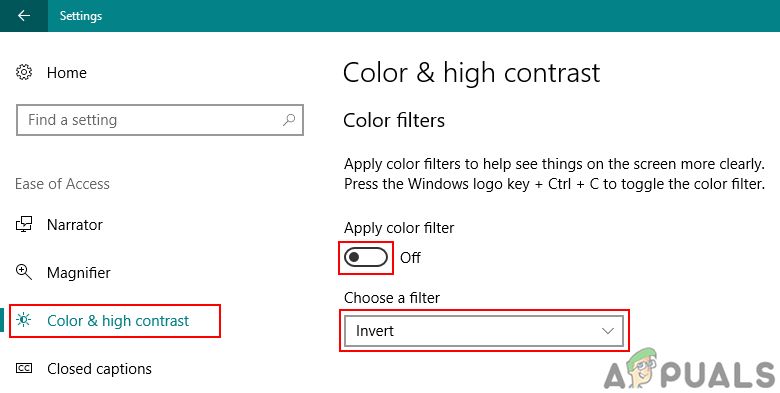Inverting Colors on Windows 10 using Color Filters and Magnifying App
Sometimes inverting colors on Windows can be helpful for reducing the strain on the eyes. Inverted colors can also help people with color blindness or vision problems on some web pages that are hard to look at. There are settings available for using the inverted colors on Windows 10. Some users will also be stuck with inverted colors or high contrast by mistakenly turning them on, so they need to know how to disable the inverted colors or high contrast on Windows 10. In this article, you will learn how to invert colors by using different methods and how to disable them back to normal.

Inverting Windows Colors through Color Filters
Windows have a feature called Color Filters, where users can change the colors of their system to inverted, grayscale or any other available option. This is the default method for using the inverted colors on your desktop. You can enable and disable the inverted colors on Windows within a few seconds as shown below:
- Hold the Windows key and press I key to open the Windows settings. Click on the Ease of Access option in the settings.

Opening Ease of Access settings - Select Color & high contrast option from the list. Switch on the toggle under the Apply color filter option.
- Now click on the Choose a filter menu and choose the Invert option in the list.

Enabling invert color filter - You will get the inverted colors for Windows 10. To disable it back, just toggle off the Color filter switch.
Inverting Windows Colors After Opening Magnifier App
A Magnifier is a tool used to enlarge part of the screen so that the user can see images and words better. It comes with additional settings that users can use for different reasons. One of the settings is changing the screen colors to inverted while the Magnifier app is running. This feature is added for the time when users are unable to read or see something due to colors problem. Follow the below steps to easily invert colors on Windows by using the Magnifier app:
- Hold the Windows key and press S to open the search function. Type Magnifier and press Enter. You can also just hold the Windows key and press the + button open Magnifier.

Opening the Magnifier app - After opening Magnifier, hold Ctrl+Alt keys and press I to invert the colors in Windows 10.
Note: You can also disable the inverted colors in Magnifier by pressing the same keys again.
Invert colors through the magnifier app - If you close the Magnifier the inverted color effect will close too. However, Magnifier remembers the last used settings and if you open Magnifier again it will show inverted colors.
Optional: Using the High Contrast Feature on Windows 10
High contrast is also good for reducing eye strain and light sensitivity. If the inverted colors don’t work, you can try the high contrast and see if that helps. This option can be enabled in the same settings as inverted colors. It also got a preview mode to check which template for high contrast you want. Follow the below steps to enable or disable the high contrast feature in Windows 10:
- Hold the Windows key and press I key to open Windows settings. Click on the Ease of Access option.

Opening Ease of Access settings - Select Color & high contrast option from the left side. Now click on the choose a theme menu and select the High contrast option. Once you like any of the high contrast, select it and click the Apply button below.

Enabling High Contrast in Windows - Now everything on the desktop will be with high contrast. To disable High Contrast, just select None again and click the Apply button.





